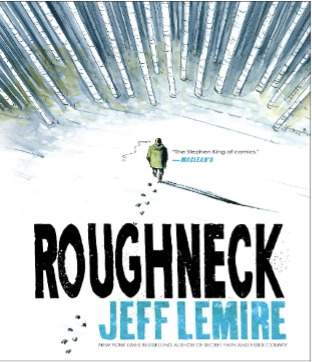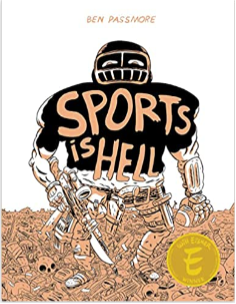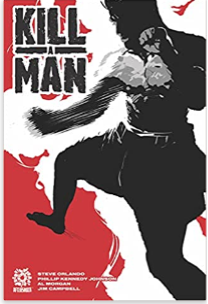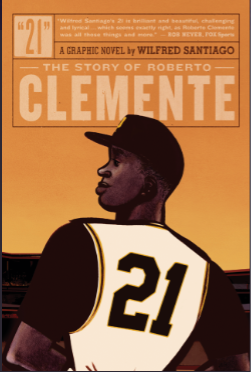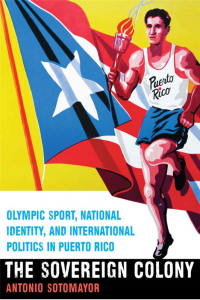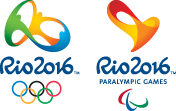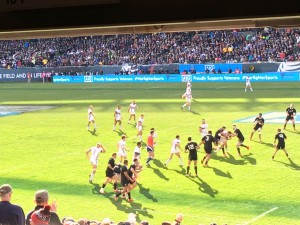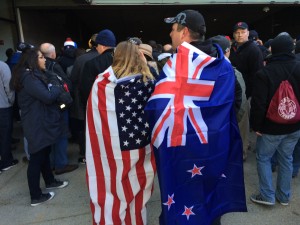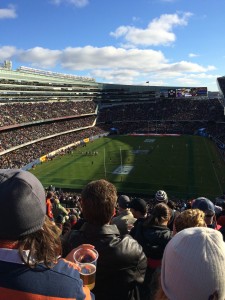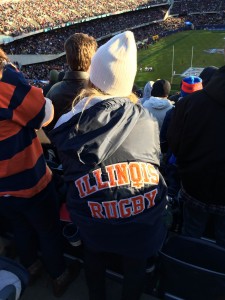By Jason Larsen
A new year has begun with the Spring semester in full motion! And while it may be cold outside, the University Library comic collection enjoys watching the various sports currently in progress. Winter sports like hockey and figure skating are part of the season, but the looming Super Bowl marks the end of the fall football season, and baseball spring training is rapidly approaching. To celebrate these activities, this month’s selections will focus on various sports comics. So, whether you like the gridiron, love the full-court pass, or even the between the ropes action of professional wrestling, there is hopefully something new for you to discover and enjoy!
Comics Available on the Shelf
Roughneck (Jeff Lemire)
Award-winning creator Jeff Lemire delivers another strong book with this graphic novel from 2018. The story focuses on a disgraced hockey player with a violent streak who finds his life circling the drain in his hometown. When he unexpectedly must take his sister into seclusion to flee her abusive boyfriend, it is an opportunity for some much-needed healing, reconnection to their cultural heritage, and a way to break generational cycles. Will they succeed or will the reemergence of the ex-boyfriend lead to a path of self-destruction and loss?
Spinning (Tillie Walden)
Tillie Walden spent a decade in competitive figure skating as a child. From the pre-dawn lessons to school, and then right to the evening team practices, her life was nothing but skating In this personal memoir, we follow a period of her life when, after she moved to a new school, she begins to question everything she had invested so much of her personal life into at this point. In so doing, she realizes the need to find her true self, voice, and purpose.
Sumo (Thien Pham)
Artist Thien Pham takes us on a journey that is akin to a sumo match in that he slowly builds his tale but ends it with abrupt power. A former football player finds his life in shambles as he realizes his dream career in football is over, which also causes his girlfriend to leave him. In the midst of all this, he is offered the chance to join a training stable for sumo wrestling in Japan. As he begins his journey in this new sport, he begins to find a sense of balance he had thought was lost when his life imploded.
Sports is Hell (Ben Passmore)
This comic is a mostly satirical examination of the sport of football’s fanaticism by creator Ben Passmore. We follow the main character Tea after her hometown team wins the Super Bowl. What starts as a normal celebration soon breaks down into a riot where small armed factions form to survive. Tea joins one of these to find her missing friends and somehow finds herself on a quest to find the star receiver from the game. If they do find him, will he help them save the city by uniting the people? Or could he instead be the metaphorical match that burns it all down to the ground?
Dragon Hoops (Gene Luen Yang, Rianne Meyers, and Kolbe Yang)
Creator Gene Luen Yang never got sports. Especially since his childhood experiences with sports, especially basketball, were less than endearing. Now as an adult teaching high school, it is all he hears about at his current school. The school’s Varsity team is on a phenomenal run that could lead to the state championships, so Gene decides to get to know the young players on the team to learn their stories. Along the way, Gene becomes so involved that their season will not only change the team’s lives but his as well.
Yowamushi Pedal (Wataru Watanabe)
This manga explores the exciting world of competitive cycling. The series focuses on Sakamichi Onoda who rides on an old, heavy bike fifty-five miles a week to the town of Akihabara for the latest games which results in him having incredible speed and stamina. As Sakamichi enters high school in this first volume, he meets Shunsuke who thinks Sakamichi may just be the answer for their Competitive Cycling Club. Will Sakamichi forgo the Anime Club and join Shunsuke? And if so what races and adventures await them?
Kill a Man (Steve Orlando, Phillip Kennedy Johnson, and Alec Morgan)
Eisner and GLADD nominated writer Steve Orland and the rest of the creative team deliver a tap-out performance with this graphic novel. We follow the story of James Bellyi whose father was beaten to death almost 20 years prior for yelling a homosexual slur at a fellow MMA fighter who is gay. In the present, James is well on his way to MMA fame when he is outed by his opponent before their big match. This begins a spiral where he loses everything, even his friends and family. To fight his way back to the top, he finds there is only one person who can help him– the man who killed his father.
In Waves (A. J. Dungo)
Our selection from A. J. Dungo is a unique memoir that involves the sport of surfing. He uses this book to recall his late partner, her losing battle with cancer, and the shared love of surfing that helped bond them during their time together. And by weaving his story in with that of great surfers in the sport, he has created a unique love letter not only to his late partner but to the sport as well.
Comics Available Through ComicsPlus
21: The Story of Roberto Clemente (Wilfred Santiago)
Creator Wilfred Santiago’s second graphic novel is the critically acclaimed biography of the Pittsburg Pirates right fielder who was the first Caribbean and the first Latin-American player to be elected to the Baseball Hall of Fame. The story follows him from his childhood in Puerto Rico through his climb to success in the major leagues. And while the focus is on Clemente’s baseball career, Santiago provides a more nuanced view of Clemente through his exploration of his time on and outside of the diamond.
La Mano Del Destino (J. Gonzo)
La Mano Del Destino is J. Gonzo’s follow-up after the acclaimed biography Voz de MAYO: Tata Rambo. The series is set in 1960s Mexico at the time when Lucha Libre wrestling was an importnat part of Mexican society. After being betrayed and unmasked in the ring, a disgraced former Luchador champion makes what could be a deal with the devil to get back on top. Imbued with new ability and now known as La Mano Del Destino, our Luchador begins a path of revenge, wrestling, and maybe redemption.
While the above are our current favorite comics, there are many more to choose from between the catalog and ComicsPlus application. Some wonderful features of the ComicsPlus Application are that it can be viewed on any computer or mobile device and the content is free to all university faculty, staff, and students. We encourage you to not only try out our selections but to explore and find your next new favorite comic.
If you are unfamiliar with the ComicsPlus application, the service provides our students, staff, and patrons with access to over 20,000 comics from 87 different publishers in a digital format. Check out the video links below as they provide additional details on the application.
How to Locate and Access ComicsPlus
Finally, If this post leaves you hungry for more recommendations or itching to start a sports-themed research project, consider reaching out to Applied Health Sciences Librarian, JJ Pionke!


